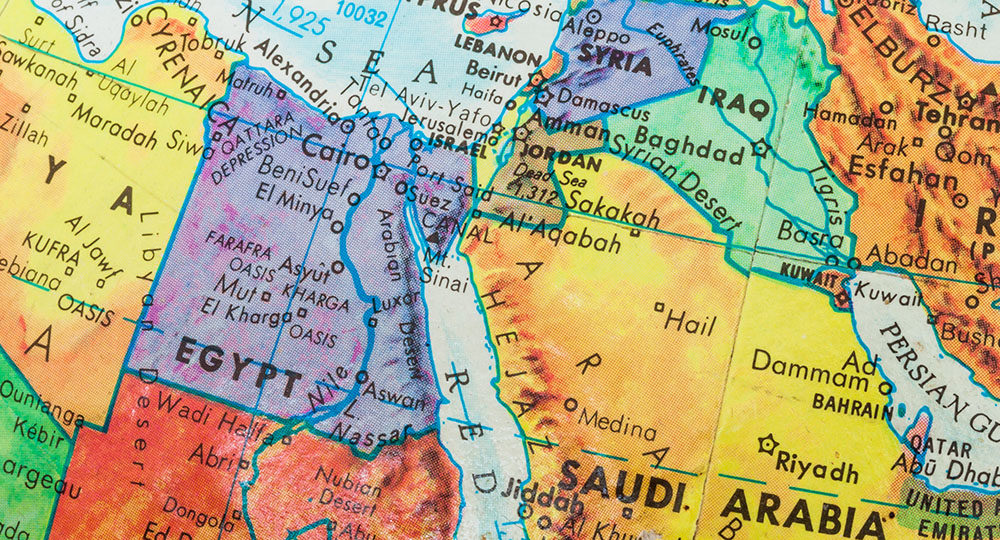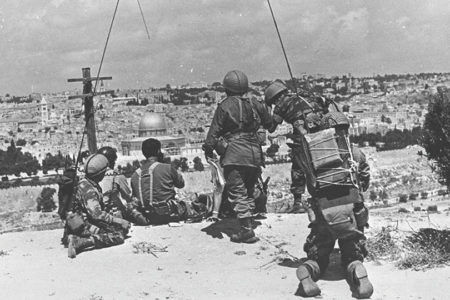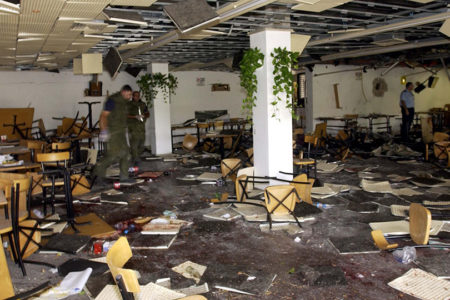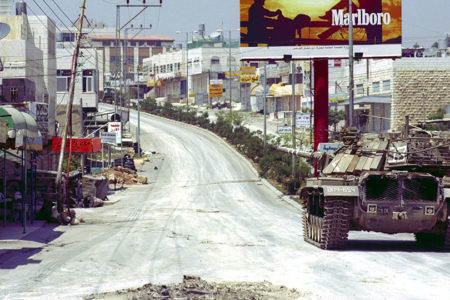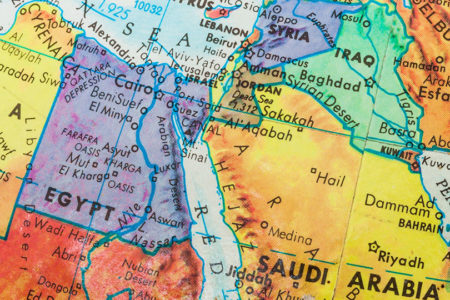Twenty Facts About Israel and the Middle East
EDITOR’S NOTE: The following is by William Bennett, Jack Kemp, and Jeane Kirkpatrick. Although written last year, it remains as vital and timely as ever in communicating the truth about the Arab-Israeli conflict. (Used by permission of Empower America, www.empoweramerica.org.)
The world’s attention has been focused on the Middle East. We are confronted daily with scenes of carnage and destruction. Can we understand such violence? Yes, but only if we come to the situation with a solid grounding in the facts of the matter—facts that too often are forgotten, if ever they were learned. Below are twenty facts that we think are useful in understanding the current situation, how we arrived here, and how we might eventually arrive at a solution.
Roots of the Conflict
1 When the United Nations proposed the establishment of two states in the region—one Jewish, one Arab—the Jews accepted the proposal and declared their independence in 1948. The Jewish state constituted only 1/6 of one percent of what was known as “the Arab world.” The Arab states, however, rejected the UN plan and since then have waged war against Israel repeatedly, both all-out wars and wars of terrorism and attrition. In 1948, five Arab armies invaded Israel in an effort to eradicate it. Jamal Husseini of the Arab Higher Committee spoke for many in vowing to soak “the soil of our beloved country with the last drop of our blood.”
2 The Palestine Liberation Organization (PLO) was founded in 1964—three years before Israel controlled the West Bank and Gaza. The PLO’s declared purpose was to eliminate the State of Israel by means of armed struggle. To this day, the Web site of Yasser Arafat’s Palestinian Authority (PA) claims that the entirety of Israel is “occupied” territory. It is impossible to square this with the PLO and PA assertions to Western audiences that the root of the conflict is Israel’s occupation of the West Bank and Gaza.
3 The West Bank and Gaza (controlled by Jordan and Egypt from 1948 to 1967) came under Israeli control during the Six Day War of 1967 that started when Egypt closed the Straits of Tiran and Arab armies amassed on Israel’s borders to invade and liquidate the state. It is important to note that during their 19-year rule, neither Jordan nor Egypt had made any effort to establish a Palestinian state on those lands. Just before the Arab nations launched their war of aggression against the State of Israel in 1967, Syrian Defense Minister (later President) Hafez Assad stated, “Our forces are now entirely ready . . . to initiate the act of liberation itself, and to explode the Zionist presence in the Arab homeland . . . the time has come to enter into a battle of annihilation.” On the brink of the 1967 war, Egyptian President GamalNassar declared, “Our basic objective will be the destruction of Israel.”
4 Because of their animus against Jews, many leaders of the Palestinian cause have long supported our enemies. The Grand Mufti of Jerusalem allied himself with Adolf Hitler during WWII. Yasser Arafat, chairman of the PLO and president of the PA, has repeatedly targeted and killed Americans. In 1973, Arafat ordered the execution of Cleo Noel, the American ambassador to the Sudan. Arafat was very closely aligned with the Soviet Union and other enemies of the United States throughout the Cold War. In 1991, during the Gulf War, Arafat aligned himself with Saddam Hussein, whom he praised as “the defender of the Arab nation, of Muslims, and of free men everywhere.”
5 Israel has, in fact, returned most of the land that it captured during the 1967 war and right after that war offered to return all of it in exchange for peace and normal relations; the offer was rejected. As a result of the 1978 Camp David accords—in which Egypt recognized the right of Israel to exist and normal relations were established between the two countries— Israel returned the Sinai desert, a territory three times the size of Israel and 91 percent of the territory Israel took control of in the 1967 war.
6 In 2000, as part of negotiations for a comprehensive and durable peace, Israel offered to turn over all but the smallest portion of the remaining territories to Yasser Arafat. But Israel was rebuffed when Arafat walked out of Camp David and launched the current intifada.
7 Yasser Arafat has never been less than clear about his goals—at least not in Arabic. On the very day that he signed the Oslo accords in 1993—in which he promised to renounce terrorism and recognize Israel—he addressed the Palestinian people on Jordanian television and declared that he had taken the first step “in the 1974 plan.” This was a thinly-veiled reference to the “phased plan,” according to which any territorial gain was acceptable as a means toward the ultimate goal of Israel’s destruction.
8 The recently deceased Faisal al-Husseini, a leading Palestinian spokesman, made the same point in 2001 when he declared that the West Bank and Gaza represented only “22 percent of Palestine” and that the Oslo process was a “Trojan horse.” He explained, “When we are asking all the Palestinian forces and factions to look at the Oslo Agreement and at other agreements as ‘temporary’ procedures, or phased goals, this means that we are ambushing the Israelis and cheating them.” The goal, he continued, was “the liberation of Palestine from the river to the sea,” i.e., the Jordan River to the Mediterranean Sea—all of Israel.
9 To this day, the Fatah wing of the PLO (the “moderate” wing that was founded and is controlled by Arafat himself) has as its official emblem the entire state of Israel covered by two rifles and a hand grenade—another fact that belies the claim that Arafat desires nothing more than the West Bank and Gaza.
10 While criticism of Israel is not necessarily the same as “anti-Semitism,” it must be remembered that the Middle East press is, in fact, rife with anti-Semitism. More than fifteen years ago the eminent scholar Bernard Lewis could point out that “The demonization of Jews [in Arabic literature] goes further than it had ever done in Western literature, with the exception of Germany during the period of Nazi rule.” Since then, and through all the years of the “peace process,” things have become much worse. Depictions of Jews in Arab and Muslim media are akin to those of Nazi Germany, and medieval blood libels—including claims that Jews use Christian and Muslim blood in preparing their holiday foods—have become prominent and routine. One example is a sermon broadcast on PA television where Sheik Ahmad Halabaya stated, “They [the Jews] must be butchered and killed, as Allah the Almighty said: ‘Fight them: Allah will torture them at your hands.’ Have no mercy on the Jews, no matter where they are, in any country. Fight them, wherever you are. Wherever you meet them, kill them.”
11 Over three-quarters of Palestinians approve of suicide bombings—an appalling statistic but, in light of the above facts, an unsurprising one.
The State of Israel
12 There are 21 Arab countries in the Middle East and only one Jewish state: Israel, which is also the only democracy in the region.
13 Israel is the only country in the region that permits citizens of all faiths to worship freely and openly. Twenty percent of Israeli citizens are not Jewish.
14 While Jews are not permitted to live in many Arab countries, Arabs are granted full citizenship and have the right to vote in Israel. Arabs are also free to become members of the Israeli parliament (the Knesset). In fact, several Arabs have been democratically elected to the Knesset and have been serving there for years. Arabs living in Israel have more rights and are freer than most Arabs living in Arab countries.
15 Israel is smaller than the state of New Hampshire and is surrounded by nations hostile to her existence. Some peace proposals— including the recent Saudi proposal—demand withdrawal from the entire West Bank, which would leave Israel 9 miles wide at its most vulnerable point.
16 The oft-cited UN Resolution 242 (passed in the wake of the 1967 war) does not, in fact, require a complete withdrawal from the West Bank. As legal scholar Eugene Rostow put it, “Resolution 242, which as undersecretary of state for political affairs between 1966 and 1969 I helped produce, calls on the parties to make peace and allows Israel to administer the territories it occupied in 1967 until ‘a just and lasting peace in the Middle East’ is achieved. When such a peace is made, Israel is required to withdraw its armed forces ‘from territories’ it occupied during the Six-Day War— not from ‘the’ territories nor from ‘all’ the territories, but from some of the territories.”
17 Israel has, of course, conceded that the Palestinians have legitimate claims to the disputed territories and is willing to engage in negotiations on the matter. As noted above, Israeli Prime Minister Ehud Barak offered almost all of the territories to Arafat at Camp David in 2000.
18 Despite claims that the Israeli settlements in the West Bank are the obstacle to peace, Jews lived there for centuries before being massacred or driven out by invading Arab armies in 1948-49. And contrary to common misperceptions, Israeli settlements—which constitute less than two percent of the territories—almost never displace Palestinians.
19 The area of the West Bank includes some of the most important sites in Jewish history, among them Hebron, Bethlehem, and Jericho. East Jerusalem, often cited as an “Arab city” or “occupied territory,” is the site of Judaism’s holiest monument. While under Arab rule (1948-67), this area was entirely closed to Jews. Since Israel took control, it has been open to people of all faiths.
20 Finally, let us consider the demand that certain territories in the Muslim world must be off-limits to Jews. This demand is of a piece with Hitler’s proclamation that German land had to be “Judenrein” (empty of Jews). Arabs can live freely throughout Israel, and as full citizens. Why should Jews be forbidden to live or to own land in an area like the West Bank simply because the majority of people is Arab?
In sum, a fair and balanced portrayal of the Middle East will reveal that one nation stands far above the others in its commitment to human rights and democracy as well as in its commitment to peace and mutual security. That nation is Israel.
